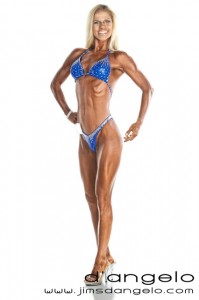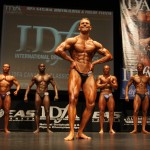[Lisa] I did something this past January that caused a lot of people to call me the “F” word, I turned fifty. As you know, they say it is harder to lose weight after you turn fifty. While that may or may not be the case I decided to add it to the litany of reasons why I can’t shed the pounds. I have been working out with Mike at Pure Physique for a few years. I have lost some weight and I am down a size. In addition, I am lifting, pulling and pushing much higher weights then when I started. (Mike can fill you in on my “impressive” numbers, ha!) But, I constantly bemoan my inability to make that darn scale register lower numbers. Mike insists it is my diet. My four basic food groups are: ice cream, pasta, bread and Starbucks. I don’t see a problem. Apparently Mr. Lipowski does.
I am, for the most part, a driven person. However, I just can’t seem to find the motivation to make serious changes to my diet. I am hoping “going public” will help. Maybe it will help some of you as well. I told Mike a few months ago, “I don’t want to compete in a body building contest. I just want to look like I could”. Is that even possible?
[Mike] Lisa’s situation is not at all uncommon. In fact I would go so far as to say that it’s pretty much falls in line with what I’ve seen from 75-80% of those I’ve trained over the past 13 years. The story goes something like this (from the clients perspective):
I realize I’m out of shape and since I really don’t know what to do I’ll hire a trainer. The trainer tells me how he can help, explaining that it will take a combination of proper exercise and a healthy diet. Since I know I need someone to push me and help me be accountable, I’m in.
I start my training and within one to months I’m feeling better and I’ve even lost a little bit of weight and my clothes are fitting better, and I really haven’t even changed my diet that much. A few more months go by and DAMN am I getting strong. I’m lifting weights in the gym that I never imagined being able to lift! Unfortunately the weight on my scale doesn’t seem to be moving anymore. I know I should be eating better but I love my (insert ice cream, pizza, burgers, alcohol, sweets, breads, etc). Besides I have to have a life. …At least I have my trainer to complain to about this and he’ll come up with a workout to do the trick.
Lisa touched on good point before when she said she: “can’t seem to find the motivation to make serious changes…” The problem however is not just motivation it’s leverage. You not only need a reason to be excited about getting in shape but you need a reason to be fearful if you don’t. Taking her goal “public” is certainly a move in the right direction since there is now a consequence to not staying on track—everyone will know and I won’t hesitate to put it out there. I also won’t hesitate to publicly congratulate her should she meet her objective of looking like she could compete.
No trainer or fitness instructor is capable of creating a workout to make up for a person’s overindulgence nor can we follow you around and make sure you’re adhering to the plan we set forth. If we could, believe me we would. There’s certainly a wee bit of personal accountability necessary to get one’s self into “competition shape” and the real work takes place outside of the gym.






